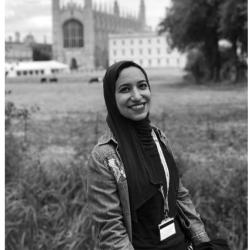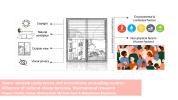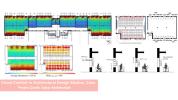Your Interview Sahar Abdelwahab Abdalrahman

Sahar Abdelwahab Abdalrahman
Architect, Educator, Researcher
United Kingdom
Introduce yourself (name, company, position, country) and tell us how you got into lighting design (including education/qualifications).
I’m Sahar Abdelwahab, an architectural engineer, holding a lecturer position at Leicester School of Architecture, De Montfort University in the UK. I’m specialized in sustainable building design, building performance and user perception and control of façade systems. In particular, my research is centred on daylighting, discomfort glare and user comfort in buildings.
I previously held academic, scholarly, and research positions at Universite’ Catholique de Louvain, Belgium, Texas University in Austin, Al-Azhar University in Egypt and The University of Nottingham, UK
I conducted my PhD research jointly between the University of Nottingham, UK and Al-Azhar University, Egypt. The project focused on the utilization of daylighting as a strategy to reduce energy consumption in buildings through facade design and the examination of the involved simulation techniques.
Tell us about your work – is there a specific type of project you like to work on or an area you specialise in and why?
My research background is centred on environmental building design and building performance with a focus on daylighting performance in buildings, daylight glare analysis, visual comfort, environmental façade design, and user control. Throughout my research career, I developed good knowledge in lighting experimental and simulation research methods.
Over the past 3 years, I developed more interest in multidisciplinary research focusing on subjective responses and reactions to daylighting in architectural contexts. As such, I have been working on projects concerning façade design with respect to both physical and non-physical motivations of daylight control which involved human subjects testing in semi- controlled test settings or through surveys.
What project are you most proud of and why?
Project 1
A research project titled "Visual Discomfort Analysis as a Tool to Support Façade Shading Design: A Case Study in the Architectural Design Studio’’ was conducted to evaluate the daylight performance in the architectural studios at Al-Azhar University in Cairo. This work is really special because it was driven by personal motives and observation of visual problems in my workplace where visual discomfort from daylight was reported by 49% of the students, leading to difficulties in performing their tasks. I worked on parametric simulation workflow to examine shading scenarios for multiple view positions and view targets to reduce glare risks and improve indoor visual environment.
Project 2
This project explored how culture plays a crucial role in shaping users' preferences when it comes to window settings and their motivations for controlling shading.
The idea of this project is driven by recent scientific literature highlighted that user preferences and interactions with outdoor environment are governed by the physical contexts (e.g., daylight, heating and ventilation) as well as other user-related psychological and physiological factors (e.g., perception of privacy, view preferences, etc.), potentially diverged based on users’ culture and background. In response, this research endeavoured to identify the influence of cultural characteristics on window preferences and motives that determined shading control.
What is the biggest challenge that you have overcome in your career?
There are always rapid advancements in lighting research and methodologies that can present a challenge. I try to stay current with the latest developments and be adaptable to new techniques and tools.
How does light inspire you?
My aspirations and passion for architecture and sustainability have always motivated me to push the boundaries to develop sustainable solutions for our built environment. Natural daylight is a sustainable resource of light which improves not only energy demands and overall building performance but also occupant productivity health and well-being.
What is your message for other Women In Lighting?
Keep your perspectives and contributions to enrich the world of lighting design and technology.
Associate member at Syndicate of Egyptian Engineers, Cairo, Egypt
- ADH Research Funding (November 2023), Arts, Design and Humanities, De Montfort University, UK
- HIGHER EDUCATION INNOVATION FUND (October 2023), Arts, Design and Humanities, De Montfort University, UK
- Research Award (August 2023), Arts, Design and Humanities, De Montfort University, UK
- CRESMI grant (March 2021)
A prize offered by the British Council in Egypt for a collaborative project between Egyptian and British institutes to tackle the impacts of climate change. - The Mission Sector, Ministry of Higher Education in Egypt (September 2021)
Post-doctoral grant at the Université Catholique de Louvain, Belgium - Fulbright grant (June 2019-September 2019):
The grant provided by the U.S government for the Fulbright Junior Faculty Development Program at the University of Texas at Austin. - Newton Mosharafa fund (October 2016-September 2018)
A collaboration between the Egyptian Cultural Affairs and Mission Sector and by the British Council in Egypt. The funding sponsored a period of 2-years visiting PhD study at the University of Nottingham (UK) from Al-Azhar University, Cairo (Egypt), (October 2016- October 2018)- £25,000 per year.
“Keep your perspectives and contributions to enrich the world of lighting design and technology.”
Selected portfolio:







_-_28de80_-_7db23e7be28fa2ef8b3ac1244e7294cfe7110f6e.jpg)